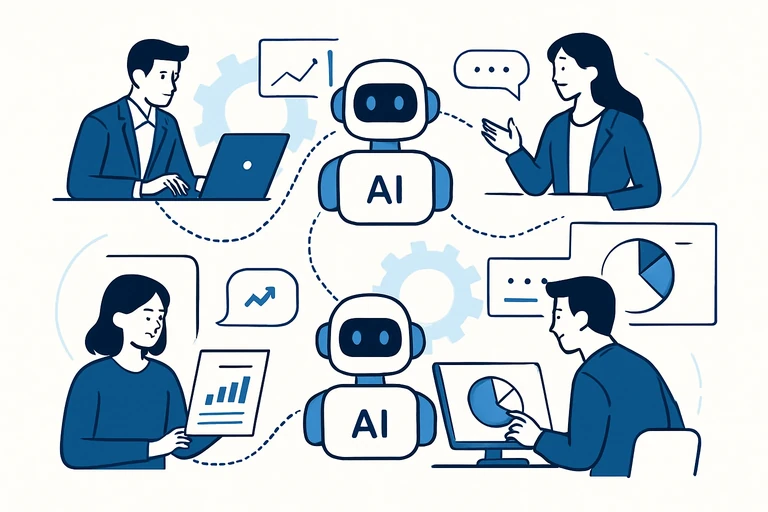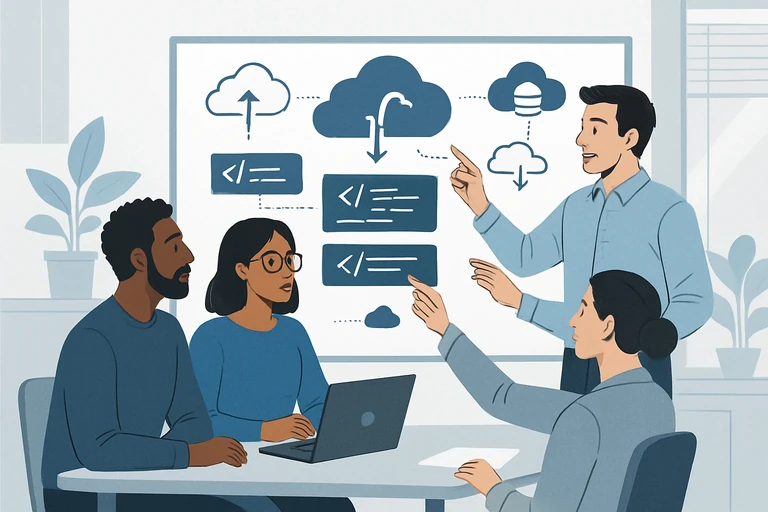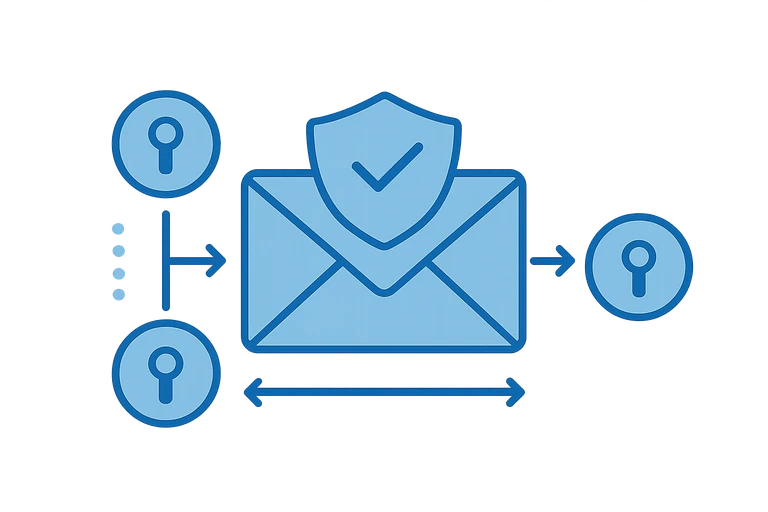DevOps is within reach for SMEs. This practical guide outlines a lean, value-driven approach to auto...

The Rise of Autonomous Agents in 2025
The Rise of Autonomous Agents in 2025 explores practical patterns, platforms, and governance considerations for deploying autonomous AI agents in enterprise. It offers a step-by-step blueprint, real-world use cases, and Multek’s approach to responsible adoption.
Introduction
Autonomous agents—AI systems that can sense, decide, and act across tools, data sources, and interfaces—have moved from niche experiments to a core component of modern software delivery in 2025. With advances in large language models, memory and memory-augmentation techniques, and multi-agent orchestration platforms, organizations can orchestrate complex workflows with minimal human intervention while maintaining guardrails for safety and compliance. The shift is being driven not only by technical capability but by a clear business case: faster time-to-value, scalable automation, and the ability to turn vast data into actionable decisions at the edge of operations.
OpenAI’s Operator, a browser-enabled agent introduced in January 2025 and later integrated into ChatGPT as a native agent in July 2025, exemplifies how agents can perform real-world, repetitive tasks with supervision and safety controls. LangGraph Platform’s general availability in May 2025 furtheraccelerated enterprise adoption by providing production-grade deployment, memory, and observability for long-running agents. These developments, along with a growing ecosystem of agent frameworks (LangChain, AutoGen, CrewAI, and more), have transformed autonomous agents from a curiosity into a practical engineering discipline.
This article translates those developments into a practical playbook for engineering teams and business leaders who want to harness autonomous agents to deliver tangible business value—while keeping security, privacy, and ethics at the center of their implementation.
1) What are autonomous agents in 2025, and why do they matter now?
Autonomous agents are software entities that can reason about goals, select tools, execute actions, and adapt to new information with limited or no day-to-day prompting. In 2025, the most mature architectures separate concerns into planning, execution, communication, and evaluation, enabling robust, multi-step workflows that persist across sessions. LangChain’s guiding construction in 2025 highlights four core agent types: Planner agents (the strategic brain), Executor agents (carry out subtasks), Communicator agents (manage handoffs and memory), and Evaluator agents (quality-control and routing). This modular orchestration enables teams to build reliable, auditable AI systems that can handle complexity at scale.
Beyond single-agent loops, organizations increasingly deploy multi-agent systems where different agents specialize (for example, data retrieval, code generation, or domain-specific analysis) and collaborate through shared memory and coordinated planning. OpenAI’s Operator demonstrates how agents can act directly in real-world contexts via a browser, while LangGraph Platform provides lifecycle management, memory persistence, and observability to productionize these patterns. These shifts matter because they enable automation at a business scale—across product development, customer support, data operations, and operations planning.
2) The 2025 landscape: who’s shaping autonomous agents and how they’re used
The agent ecosystem in 2025 is characterized by a growing set of platforms that make building, deploying, and governing autonomous agents more accessible and scalable:
- Operator (OpenAI): A browser-enabled agent introduced in January 2025, designed to perform web-based tasks autonomously. By July 2025, Operator was integrated into ChatGPT as a native agent, underscoring a shift from isolated experiments to embedded agent capabilities in mainstream AI products. This is a concrete example of how agents can extend human capabilities in real-world workflows.
- Deep Research (OpenAI): A multimodal agent that autonomously browses the web, attaches sources, and generates cited reports, enabling deeper, evidence-based analyses in shorter timeframes. This exemplifies how agents can augment knowledge work rather than merely assist it.
- LangGraph Platform and LangGraph GA: LangGraph Platform (GA announced May 16, 2025) provides memory, persistence, and scalable deployment for long-running agents, with Studio tooling for debugging and rewinds. The LangGraph ecosystem sits alongside LangGraph-derived capabilities within LangChain’s broader product suite, including deployment options and enterprise governance features.
- LangGraph Platform in production: Enterprise teams are adopting LangGraph Platform to manage not just one agent but fleets of agents, enabling centralized governance, versioning, and observability. LangChain’s official resources emphasize memory, streaming, and human-in-the-loop moderation as essential capabilities for real-world use.
Industry observers also emphasize three macro-trends shaping adoption in 2025: (1) AI agents becoming decision-makers across real-time operations, (2) synthetic data helping protect privacy and scale training/evaluation, and (3) executive AI literacy enabling leaders to govern and measure impact effectively. These themes are echoed in trusted analyses and industry coverage in 2025.
3) Architecting autonomous agents for business value: a practical blueprint
Transforming a business process into an autonomous agent workflow typically follows a disciplined pattern that combines planning, action, feedback, and governance. Here is a practical blueprint you can adapt to your context:
- Define the goal and success metrics: What decision or action should the agent drive, and how will you measure success (speed, accuracy, cost, or revenue impact)? Use a 2x2 scorecard (impact vs. effort) to prioritize use cases for an initial pilot.
- Choose the orchestration pattern: Decide whether a single agent with a powerful toolset suffices, or a multi-agent crew with specialized roles is needed. LangChain and LangGraph highlight options ranging from single-agent REACT-style patterns to graph-based, memory-aware workflows.
- Define roles and tools: Map each agent to a role (e.g., Researcher, Coder, Validator) and assign tools (APIs, databases, code runtimes). Use a shared memory layer to persist context across steps and sessions. This memory architecture is a cornerstone of modern agent platforms.
- Incorporate memory and memory strategies: Short-term buffers for ongoing conversations, vector databases for long-term memory, and periodic summaries to control cost and improve reliability. LangGraph/LangChain ecosystems emphasize robust memory management as a production capability.
- Implement safety, governance, and human-in-the-loop (HITL): Establish guardrails for sensitive actions, require HITL for high-risk operations, and implement monitoring that can pause or reroute tasks when anomalies are detected. This is essential for responsible adoption of agentic AI.
- Plan for production readiness: Choose deployment options (cloud, hybrid, self-hosted) that fit data governance and latency requirements. LangGraph Platform provides production-grade deployment and centralized management to scale agents across teams.
- Measure, iterate, and govern: Use observability tools to trace agent decisions, capture outcomes, and continuously refine prompts, tools, and workflows. LangSmith integration and structured evaluation frameworks are built into LangGraph/LangChain ecosystems.
4) Real-world use cases across industries
Autonomous agents are being applied wherever processes are data-driven, rules-based, and require coordination across systems. Consider these representative use cases:
- Software development and IT operations: Agents can scaffold code, run tests, perform code reviews, and auto-generate documentation—complementing developer productivity with reliable tooling and automated QA. LangGraph/LangChain tooling is designed to support code-oriented agents and complex memory for project work.
- Data analysis and insight generation: Agents retrieve, synthesize, and summarize large document sets, dashboards, and datasets, producing executive-ready reports with citations (as demonstrated by Deep Research). This accelerates research sprints and decision-making.
- Customer experience and operations: Multi-agent systems coordinate support workflows, triage tasks, draft replies, and trigger workflows across CRM, ticketing, and analytics platforms. The broader industry narrative emphasizes real-time decision-making and frontline adoption.
- Logistics and supply chain: Agents monitor KPIs, optimize routes, and reconfigure resources in real time, contributing to resilience in volatile environments. Industry commentary highlights the value of autonomous, adaptive decision-makers in such domains.
5) Architecture and implementation: a step-by-step guide
The following practical steps map to typical enterprise projects. Adapt the sequence to your risk profile and regulatory environment:
- Start with a narrow, high-value use case (pilot). Select a task that is repetitive, rule-based, and time-consuming, such as auto-triage of support tickets or automated data extraction and reporting.
- Design the agent graph: Decide whether you’ll implement a linear chain, a planner/executor pattern, or a graph-based flow with cycles for retries and backtracking. LangGraph’s graph-based approach supports complex, looping workflows with persistent state.
- Define tools and data interfaces: Identify external systems (APIs, databases, file stores) and how the agent will interact with them. Use a centralized memory layer to persist results and context for re-use in later steps.
- Establish guardrails and HITL thresholds: Implement consent, privacy, and risk controls for sensitive actions (e.g., handling PII, financial data). Operator-style capabilities and safety considerations demonstrate how to balance automation with safety.
- Prototype to production: Move from a prototype to production with a platform that offers observability, versioning, and governance. LangGraph Platform GA and related tooling provide a path to production-scale agents.
- Monitor and optimize: Track success metrics, agent reliability, and cost. Use evaluation engines to flag deviations and retrain prompts or adjust tools as needed. LangGraph Studio and LangSmith enable this feedback loop.
6) Governance, ethics, and security: what to watch out for in 2025
As autonomous agents scale, governance and security become as important as capability. Key concerns include prompt injection, tool misuse, data privacy, and model misalignment. Thoughtful deployment requires:
- Clear boundary conditions for agent actions, with opt-in human oversight for critical decisions.
- Secure tool usage policies and auditable decision trails to satisfy regulatory and business requirements.
- Data privacy protections, including synthetic data usage when possible to minimize exposure of real customer data.
- Continuous risk assessment and an explicit plan for decommissioning or updating agents as models and tools evolve.
7) Multek’s approach to autonomous agents: delivering value responsibly
Multek specializes in high-performance software and AI with a strong emphasis on practical results, transparency, and ethics. Our approach to autonomous agents centers on:
- Value-led scoping: We help identify pilots with clear ROI—time-to-value, accuracy improvements, and cost reduction—before we invest in architecture.
- End-to-end lifecycle: From discovery and design to production deployment, monitoring, and governance, we provide a structured, auditable path to scale agents across teams.
- Platform choice aligned with risk: We select platform patterns (cloud vs. hybrid vs. self-hosted) and deployment models that align with data governance and security needs. The LangGraph Platform family provides the production-grade foundation to deploy long-running agents with memory and observability.
- Ethics and privacy at the center: We embed privacy-by-design and safety guardrails, incorporating synthetic data and HITL where appropriate. This mirrors industry best practices discussed by analysts and practitioners in 2025.
8) Getting started with Multek
If you’re exploring autonomous agents for 2025 and beyond, Multek can help you move quickly from concept to production-ready systems. Our engagements typically include:
- AI strategy and value mapping for agent-enabled workflows
- Architecture design and platform selection (LangGraph/LangChain, OpenAI tools, and other ecosystem components)
- Prototype sprints and pilot programs with HITL guardrails
- Production deployment, observability, and governance framework
To learn more, talk to our AI & software engineering leaders about a practical 6–8 week pilot that demonstrates measurable ROI while staying aligned with your privacy and security requirements.
Conclusion: the rise of autonomous agents in 2025 is a turning point for enterprise software
2025 marks a decisive shift from experimental capabilities to reliable, governable autonomous agents that can operate at scale across business functions. With mature orchestration platforms (like LangGraph Platform), production-grade memory and observability, and evidence-based capabilities (as seen in Operator and Deep Research), organizations have a tangible path to faster delivery, better decision-making, and more consistent outcomes. The challenge is to balance ambition with responsible governance, risk management, and a relentless focus on user value. Multek is here to help you navigate that journey, translating the latest agentic AI developments into concrete, ethical, and measurable outcomes for your business.
Note: The content references industry developments from 2025, including Operator, Deep Research, LangGraph GA (May 2025), and LangGraph Platform availability. For readers seeking exact release dates and platform capabilities, see the cited official sources.


